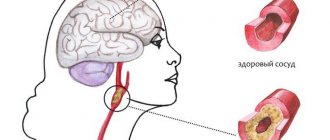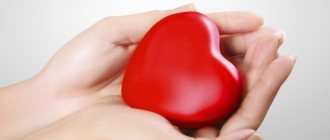01.12.2018
28. Oka Y. Thirst driving and suppressing signals encoded by distinct neural populations in the brain.
29. Saker P. Regional brain responses associated with drinking water during thirst and after its satiation.
30. Dohi K. Molecular hydrogen in drinking water protects against neurodegenerative changes induced by traumatic brain injury.
31. Meinders A. How much water do we really need to drink?
32. Jéquier E. Water as an essential nutrient: the physiological basis of hydration.
33. Aguado E. Hypodynamia Alters Bone Quality and Trabecular Microarchitecture.
34. Mukhamedieva L. Human's breath during modeled prolonged hypodynamia.
35. Ye F. A systematic review of mobility/immobility in thromboembolism risk assessment models for hospitalized patients.
36. Boraxbekk C. Physical activity over a decade modifies age-related decline in perfusion, gray matter volume, and functional connectivity of the posterior default-mode network-A multimodal approach.
37. Kemi O. High-intensity aerobic exercise training improves the heart in health and disease.
38. Hautala A. Heart rate dynamics after controlled training followed by a home-based exercise program.
39. Treatment exercises for the spine with osteochondrosis.
40. Osteochondrosis of the cervical spine, special exercises from Dr. Butrimov
‘>
Causes of cerebral circulatory disorders
The brain is the main organ of the central nervous system; it consists of neurons united by synaptic connections. By interacting with each other, neurons form chains of electrical impulses that regulate the activity of the body1.
The functioning of the brain requires large amounts of energy, which it receives through the bloodstream. Blood enters the brain through four arteries - two carotid and two vertebral, and outflow - through two jugular veins. With an average weight of 2% of the total body weight, the brain at rest consumes 15% of all blood circulating in the body, 20-25% of the oxygen received during respiration, and up to 50% of all glucose reserves entering the blood from the liver2.
Blood supply to the brain and blood circulation within the organ play a crucial role in its functioning, since without the provision and distribution of energy, oxygen, vitamins and amino acids entering the bloodstream, neurons cannot grow and divide. 85% of all pathologies associated with brain function are due to circulatory disorders3. Improving blood circulation in the brain is necessary for any pathologies and conditions that can lead to vasoconstriction or impaired blood circulation within the organ.
Pathological causes of vasoconstriction and their consequences:
- Arterial hypertension. In response to increased blood pressure, the walls of blood vessels spasm, and additional layers grow on the inside of the vessels. Thickening impairs blood flow4,5,6.
– Hypercholesterolemia. Violation of lipid metabolism in the direction of increasing low-density lipoproteins (“bad cholesterol”) leads to the formation of atherosclerotic plaques on the walls of blood vessels. Plaques completely or partially block a vessel, disrupting blood circulation, including in the brain7.
– Thrombosis. The formation of a thrombus (a clot of coagulated blood) can have various origins, as a rule, these are damage and cracks in the walls of blood vessels. Blood clots lead to blockage of blood vessels and increase blood viscosity, impairing blood circulation to the brain8,9.
- Diabetes. With increased levels of glucose in the blood, thickening of the vascular walls is stimulated, which leads to disruption of the natural flow of blood, and blood supply to the brain is disrupted10,11.
– Osteochondrosis of intervertebral discs. The vertebral artery is one of the main vessels through which blood flows to the brain. With pathology of cartilage tissue, intervertebral discs compress this artery, disrupting the blood supply to the brain12,13.
- Cardiopsychoneurosis. This is a complex of disorders of the cardiovascular system that can lead to disturbances in blood supply and circulation in various organs, including the brain14,15.
Impaired blood circulation in the brain can result from traumatic brain injuries, including concussions and bruises, as well as traumatic injuries to the spine, accompanied by impaired blood flow.
Neurocirculatory dystonia in the context of cerebral circulatory disorders is considered separately. The difficulty is that this disease often does not have an acute phase, and its main symptoms without targeted diagnosis can be explained by a number of typical pathologies such as chronic fatigue syndrome16. In other words, many simply do not know that they have this disease (sometimes called a syndrome in the medical literature).
Symptoms of neurocirculatory dystonia are nervousness, increased fatigue, sleep disturbances, weakness, impaired cognitive function, and subsequently palpitations, cardialgia, shortness of breath, and blood pressure disorders. In the future, it leads to arrhythmia, tachycardia, and chronic vascular insufficiency. All these symptoms are explained, among other things, by impaired blood circulation in the brain17.
Reasons for the development of neurocirculatory dystonia18:
– genetic predisposition;
– psycho-emotional stress;
– lack of sleep (inconsistency with circadian rhythms);
– lack of physical activity;
– unbalanced diet, obesity;
– alcohol abuse, smoking.
That is, lifestyle directly affects the development of neurocirculatory dystonia, which leads to chronic cerebral circulatory disorders. Under conditions of lack of oxygen and nutrients, the rate of formation of neurons decreases, connections between control departments, as well as the transmission and inhibition of nerve impulses within the central nervous system are disrupted.
As a result, memory, concentration, reaction and coordination of movements deteriorate, constant fatigue and drowsiness are observed, and performance drops to 50%19. This condition can lead to massive death of brain cells and the appearance of local foci of necrosis. That’s why improving blood circulation in the brain is vitally important; let’s look at how to do it point by point.
Angioprotectors
These are substances that help normalize the permeability of vascular walls, reduce swelling of vascular tissue, and accelerate metabolic processes in the vascular wall. The angioprotective effect is fully possessed by: vitamin P, anti-inflammatory non-steroidal drugs, as well as the following medications.
Doxium, the main substance of which is a special form of calcium dobesylate, necessary for strengthening the walls of blood vessels. This drug is needed to increase capillary resistance, improve blood microcirculation, and stimulate drainage function in lymphatic vessels. It thins the blood and slightly reduces platelet aggregation, which has a beneficial effect on the condition of the retinal tissue. Does not have any effect on microaneurysms and does not significantly penetrate the blood-brain barrier.
The tablet form of the drug is prescribed at the rate of 0.75-1.0 g per day, which is 3-4 tablets, which are drunk after meals. The course of treatment is quite long and can last a year or a year and a half.
Among the negative aspects of taking the drug, experts note dyspepsia and allergic skin rashes. This is a reason to reduce the dose or completely cancel it. Not prescribed during pregnancy.
Ascorbic acid is a drug for normalizing the permeability of the capillary wall, improving redox reactions, and regulating carbohydrate metabolism. In addition, ascorbic acid helps reduce cholesterol levels in the blood, accelerate tissue regeneration, and stimulate the production of steroid hormones. This property of the drug is very important if a course of steroid therapy is necessary.
Prescribed in injections or tablets. Dosage for tablets: 0.05-0.1 g up to 5 times daily, with intramuscular administration of a 5% solution - 2.0 ml No. 20-30. Intravenous injections in the same dose are also possible, although it must be taken into account that in the case of thrombosis, thrombophlebitis or increased blood clotting, they are contraindicated.
Flavonoid Rutin is a drug that reduces capillary fragility and permeability (especially in combination with ascorbic acid). Together with it, it is a participant in redox reactions and slows down the action of hyaluronidase.
The daily dose of Rutin is usually 0.1 g, prescribed in combination with ascorbic acid. Ascorutin tablets are mass produced, including rutin with ascorbic acid and glucose. The therapeutic course involves taking them 4 pieces per day. It has no contraindications or side effects.
Troxevasin (venoruton) is a drug with an action close to rutin. Regulates capillary permeability, fights swelling and tissue inflammation. In capsules, prescribed one at a time with meals, for a course of 2-4 weeks.
Divascan is a hemostatic drug that reduces microvascular permeability. Available in tablets, which are prescribed one three times a day. Patients with diabetic retinopathy or intraocular hemorrhages are recommended to take without interruption for at least two years.
Dicynone (etamsylate) is a substance that increases the content of high molecular weight mucopolysaccharides in the capillary wall, which increases their stability and normalizes permeability. The drug has the property of improving microcirculation, normalizing platelet adhesion, and has a hemostatic effect without promoting the formation of blood clots.
Prescribed orally or intramuscularly. The daily dose in tablets is 1.5-2.0 g, duration of administration is 2-3 months. IM injections are prescribed for 10-14 days; they can be combined with subcutaneous administration of this drug at a dose of 0.5 ml.
To prevent bleeding during surgical interventions, Dicynon is administered intramuscularly before and after surgery if there is a risk of postoperative bleeding.
The drug is prescribed with caution to patients with thrombosis and embolism. There are no side effects.
Prodectin (parmidin) is an angioprotector drug whose action is aimed at restoring microcirculation. It helps reduce platelet aggregation, activates fibrinogenesis, and improves the condition of the vascular endothelium. Prodectin has a pronounced anti-sclerotic effect and accelerates the disappearance of signs of intoxication.
Its intake is 4 tablets daily (1.0 g), for a course of up to 6 months.
Side effects include nausea, occasionally allergic skin rashes, and headache. When the dosage is reduced or the drug is discontinued, all phenomena disappear. Contraindications for use are liver disease.
Emoxipine helps reduce blood viscosity, reduce the permeability of vessel walls, and resolve hemorrhages. It is a retinoprotector and antioxidant, protects the retina from the negative effects of bright light (laser coagulation, sunburn). It is prescribed for hemorrhages, retinopathy, complicated myopia, retinal dystrophies, thrombosis of its veins, light or radiation burns of the eyes, and glaucoma. It is also a component of complex treatment for laser coagulation.
Prescribe one injection into the eye (subconjunctival, retrobulbar, parabulbar) of a 1% solution in a dosage of 0.5 ml every day for 10-15 days. If necessary, the course of treatment is extended to 30 days and repeated several times a year. Sometimes the drug is used in the form of eye drops.
Its side effects may include: itching, burning, pain, related to allergic reactions. They are relieved by using corticosteroids. Sometimes during injections, compaction of the orbital tissue is observed, which subsequently resolves on its own.
We improve blood circulation in the brain - sufficient and complete sleep
According to research, the duration of proper sleep is 7-8 hours per day20. Sleep should be regular - that is, it is recommended to fall asleep and wake up at approximately the same time. It is necessary to sleep in absolute darkness and silence, so the brain can fully analyze and systematize the information received during the day, as well as update the neurochemical mechanisms responsible for long-term memory21.
Research shows that adequate sleep normalizes blood circulation in the brain, ensuring adequate daily intake of oxygen and nutrients by brain cells. Lack of sleep, on the contrary, impairs blood supply to the brain and blood circulation, leads to the death of neurons and extensive damage to the central nervous system (including disruption of the function of the blood-brain barrier, which protects the brain from infections and toxins that can enter it through the blood)22,23. Therefore, in order to improve blood circulation in the brain, you must first normalize sleep; without this measure, other methods will be less effective.
What is vascular cleansing?
This is the name of a set of measures aimed at reducing cholesterol levels in the blood and destroying atherosclerotic plaques existing in the vascular bed. These are procedures that will help prevent atherosclerosis - a disease of the arteries that gradually leads to their complete blockage. This pathology can cause micro-stroke, stroke, pulmonary embolism, and gangrene of the lower extremities.
As human atherosclerosis progresses, symptoms of insufficient blood supply to various organs arise, the supply arteries of which narrow. At this stage, cleaning is necessary. Indications for its implementation:
- severe dizziness;
- drop in visual acuity;
- dyspnea;
- angina attacks;
- joint pain;
- convulsions;
- noise in ears;
- phlebeurysm;
- chronic fatigue;
- frequent and intense headaches.
Improving blood circulation in the brain - diet and drinking regimen
A diet to improve blood circulation in the brain is selected based on the metabolic characteristics and condition of a particular person. Before adjusting the diet, it is recommended to conduct the following studies: daily blood pressure monitoring, blood tests for glucose and cholesterol, and a coagulogram. Based on research results, it is necessary to adjust the amount of salt, sugar, animal fat and other products in the diet24,25,26.
Diet recommendations to improve blood circulation in the brain:
– The consumption of salted, smoked and canned foods is usually limited in the presence of arterial hypertension, based on the recommendation - no more than 4.5 grams of salt per day.
– Restrictions on the amount of animal fat (fatty meat, lard, milk, butter) are determined by the presence of hypercholesterolemia, which sets the upper limit - 1 gram of fat per 1 kg of weight.
– The amount of monosaccharides and disaccharides (glucose, sucrose and foods high in them) is limited when blood glucose is high. In this case, preference is given to polysaccharides, which are found, for example, in durum cereals and pasta.
– Since vitamin K actively stimulates blood clotting, if this indicator increases, it is recommended to limit all foods high in vitamin K (white cabbage, broccoli, spinach, lettuce, soy, eggs, dairy products, green tea).
Research shows27 that foods high in sodium reduce central perfusion pressure, which measures the level of blood flow to the brain. In this regard, outside of pathologies, it is recommended to avoid excessive consumption of foods high in sodium - salt, herring, caviar, almost all cheeses, beef kidneys, feta cheese, dry cream, powdered eggs.
Anticoagulants
Heparin , as an active substance, has a multicomponent effect: absorbable, lipotropic, anticoagulant. It is prescribed in the form of intramuscular injections according to the following scheme: the first 4 days, 4 daily injections, the next 4 days, 3 injections, then 4 days, 2 injections and another 4 days, 1 injection.
The dosage is up to 5000 units. The drug is not used in large doses as complications are possible.
Iodine preparations are prescribed to increase the fibrinolytic activity of the blood. In addition, they reduce the content of b-lipids and cholesterol. Prescribed orally 5-10 drops in milk twice or thrice a day, or in the form of pills with a dosage of 0.0005 g. The course of treatment is at least one month, carried out intermittently for many years.
Products to improve blood circulation in the brain:
– amino acids of animal and plant origin (meat, legumes);
– seafood (mussels, shrimp) and sea fish (mackerel);
– vegetables and fruits high in vitamin C and group B;
– cereals, nuts, berries and citrus fruits (rich in bioflavonoids).
Drinking regime
– a separate item in the program for improving blood circulation in the brain. Research shows that sufficient water consumption (2.5 liters per day in the absence of additional instructions due to pathologies) is the prevention of blood clots. However, in case of pathologies, it is still necessary to use antiplatelet agents or anticoagulants prescribed by a doctor.
Thirst quenching is also necessary for the development of neural populations28,29. The latest research shows that molecular hydrogen in drinking water protects the brain from neurodegenerative changes of various origins, including those caused by traumatic brain injury30. Therefore, to improve blood supply to the brain, it is necessary to drink enough water, and the drinking regime should be regular - the recommended 2.5 liters must be evenly distributed throughout the entire waking period.
Please note that 2.5 liters is an average. According to research, women on average need to drink less water than men (2.2 liters and 3 liters per day, respectively)31. Also, the recommended daily amount of water is determined by weight, age and lifestyle32. Below is a table of recommended daily water intake.
Stimulant drugs
Phibs is a biogenic stimulant produced from distilled mud from estuaries. Prescribed in the treatment of blepharitis, conjunctivitis, keratitis, myopia, vitreous opacities.
It is administered in the form of subcutaneous injections of 1 ml, the course of treatment is 30 injections.
ATP is a substance that regulates the energy metabolism of cellular reactions, mainly during the synthesis of RNA and DNA. Thanks to its action, the processes of alteration and exudation are stopped and redox reactions are stimulated. Subconjunctival administration of ATP results in its accumulation in the eye tissues without complications.
It is prescribed subconjunctivally in 0.2 ml or intramuscularly in 1-2 ml. Course of treatment: 15 subconjunctival injections or 25 intramuscular.
Peat is a derivative of distilled peat. Indications for its use, dosage and course of treatment are similar to the drug FiBS.
Aloe extract is a very effective drug in the treatment of a number of eye diseases: blepharitis, conjunctivitis, keratitis, uveitis, progressive myopia, vitreous opacities, etc.
It is prescribed as a subcutaneous injection in a dosage of 1 ml.
Not indicated for patients with severe cardiovascular diseases, hypertension, acute gastrointestinal disorders, severe kidney diseases. And also for older people.
Improving blood circulation in the brain - physical activity and exercise
Physical inactivity (lack of physical activity) can be caused by many factors - from sedentary work to basic laziness. It has a number of negative consequences, including problems with the cardiovascular and respiratory systems, bones33,34.
In the context of cerebral circulation, lack of physical activity is associated with an increased risk of blood clots35 and deterioration of the conductive capacity of gray matter (a major component of the central nervous system)36. Therefore, anyone who leads a sedentary lifestyle is recommended to take regular walks, run every night, practice Nordic walking, or workout in the gym.
Research shows that regular physical exercise has a beneficial effect on blood flow throughout the body, including the brain37,38. There are special sets of exercises to improve blood circulation in the brain, and there are also specialized programs implemented in the presence of certain pathologies.
A set of exercises to improve blood circulation in the brain:
– Take a sitting position, looking straight ahead, turn your head 45 degrees to one side, then to the other.
– Slowly rotate your head in a circle, first to the right, then to the left.
– Tilt your head up so that your chin points to the ceiling. Then lower your head to your chest and touch your chin to your chest.
– Bend to the right and left towards your shoulders so that your ear touches your shoulder. The shoulders are motionless.
– Looking straight ahead, stretch your head forward as much as possible, return it to its original position and pull it back as far as possible.
The entire complex is performed as slowly and carefully as possible. The purpose of exercises to improve blood circulation in the brain is to relax the muscles that compress the blood vessels and normalize blood flow. Each movement is performed 10-15 times; for sedentary work, it is recommended to perform the complex 2-3 times during the day at approximately equal intervals.
Exercises to improve blood circulation in the brain with cervical osteochondrosis include neck rotations, lateral flexions, rotation, retractions, and stretching of the trapezius muscle. The figure below shows an example of such a complex.
There are many specialized complexes of medical gymnastics to improve blood circulation in the brain in case of osteochondrosis of various joints39,40. It is unacceptable to perform these exercises on your own; they are performed only under the supervision of a specialist, or as directed and after consulting a doctor.
Tissue respiration stimulants
For this purpose, the enzyme preparation Cytochrome C , which is produced from the heart muscle of cows. The active substance is a participant in the act of tissue respiration and can accelerate oxidative reactions. Known as one of the components of Katachrom drops.
The drug is prescribed as an intramuscular injection of 5 ml. Before starting the course, a test is performed, the frequency of daily injections is 1 or 2. The duration of treatment is up to 20 days.
A test is required before each treatment course. With its help, the individual sensitivity of the patient is determined. As a test, 0.1 ml of Cytochrome C is injected into the skin and observed for half an hour. If redness, itching or allergic rashes occur, individual intolerance is indicated and the appointment is cancelled.
Improving blood circulation in the brain - bioactive supplements
Most dietary supplements for improving brain circulation are nootropics, the mechanism of action of which is related to stimulating blood flow. One of the popular nootropics with this mechanism of action is glycine. This is an aliphatic amino acid that functions as a neurotransmitter and has an “inhibitory” effect on neurons, which gives a mild sedative effect.
Glycine reduces the release of GABA and glutamic acid and stimulates blood circulation in the brain. Target effects – relieves irritability and aggressiveness, eliminates chronic fatigue syndrome, improves brain function, stimulating cognitive functions (memory, reaction, attention).
Among nootropics there are not only amino acids, but also extracts, for example, ginkgo biloba extract. It contains 24% flavonoids, vitamins, minerals and other bioactive substances. It has a vasodilating effect, improves blood flow to the brain and blood flow inside the organ. It also stabilizes blood pressure and cholesterol levels, improves microcirculation. Helps eliminate neurocirculatory dystonia and chronic fatigue syndrome caused by psycho-emotional stress.
Complex supplements, such as “Healthy Sleep,” will help improve blood circulation in the brain, eliminate anxiety and normalize sleep. This supplement includes glycine, gamma-aminobutyric acid, tryptophan, melatonin and 4 extracts - lemon balm, passionflower, valerian and chamomile. The benefit of the supplement is that it not only stimulates blood circulation in the brain and improves cognitive function, but also stabilizes the sleep/wake cycle, helping to get enough sleep.
Antiplatelet agents
Curantil is a drug that slows platelet aggregation, which prevents the formation of blood clots in blood vessels. It has a vasodilating effect, slightly lowers blood pressure, reduces peripheral resistance, and improves cerebral circulation.
Prescribed as an antiplatelet agent to prevent the occurrence of thrombosis after operations and for blood clots in the central retinal vein. The antiaggregation activity of Curantil is close to that of acetylsalicylic acid. However, this drug is better tolerated and does not have ulcerogenic properties.
Curantil is prescribed orally at a dose of 25 mg three times a day for a long period.
There are side effects of taking the drug, although they are very rare. These include: redness of the face due to a vasodilator effect (short-term), increased heart rate, allergic rash. Not prescribed for widespread atherosclerosis of the coronary arteries.
Acetylsalicylic acid is an anti-inflammatory drug with antithrombotic action and the ability to inhibit platelet aggregation. The drug is used for thrombosis of retinal vessels to prevent the formation of clots.
Prescribed orally 0.125 g or 1/4 tablet after meals once a day. Can be used for a long time.
Tiklid (ticlopedine) has the ability to suppress the aggregation of erythrocytes and platelets, activates the synthesis of prostacyclin and prostaglandins E1 and D2, and improves microcirculation. It is used for retinopathy - diabetic and post-thrombotic.
Tiklid is taken orally 0.25 g with food twice a day for a long time (up to 6 months or longer) under the control of blood composition and liver function.
When taken, diarrhea and epigastric pain may occur. Phenomena of hemorrhages, leukopenia, and agranulocytosis are also possible.
The drug is not prescribed simultaneously with anticoagulants or antiplatelet agents. It is contraindicated in cases of increased risk of bleeding, stroke, exacerbation of stomach ulcers, liver disease, pregnancy and lactation.
Improving blood circulation in the brain - vitamins
Among the vitamins for improving blood circulation in the brain, one can highlight Vitamin B5 (pantothenic acid), which is necessary for the functioning of nerve fibers, the division of epithelial cells and the formation of the inner wall of blood vessels. Vitamin B6 (pyridoxine) is involved in the functioning of the nervous system, is necessary for the formation of a number of neurotransmitters, and reduces the level of lipids in the blood. Vitamin B8 (inositol) is part of the protective membrane of brain cells, stabilizes lipid metabolism, and normalizes mood.
Vitamin C (ascorbic acid) normalizes blood clotting, stabilizing blood flow, stabilizes capillary permeability, and is an antioxidant. Also, complexes with minerals - phosphorus, magnesium, selenium and zinc - are useful to improve blood circulation in the brain. All these minerals are necessary to maintain the functioning of brain cells. Examples of such complexes are Magnesium + Vitamin B6, Zinc + Vitamin B6, Multivitamin complex 360.
Drugs that promote resorption
Chymotrypsin is a drug that helps break down blood clots, exudates, and fibrin. Prescribed as intramuscular injections of 5-10 mg in saline solution, lasting 20-30 days.
Fibrinolysin is a drug with high activity against fresh blood, so if the hemorrhage has occurred recently, treatment begins with it. It is prescribed as a sub injection in combination with fibrinolysin and heparin for 10-15 days. If necessary, chymotrypsin can be used after this. If the hemorrhage occurred a long time ago, it is not advisable to administer Fibrinolysin.
Another drug in this group, Lidaza, is contraindicated in recent hemorrhages. And in case of long-standing hemorrhage, it can provoke it again, therefore it is also contraindicated.
Diagnosis of vascular insufficiency
To the extent that the symptoms of vascular insufficiency are not always pronounced, to clarify the diagnosis of the pathology and then select the optimal treatment regimen, the patient will need to undergo several types of examinations. Among them:
- Orthostatic test. Control of pressure in a state of activity, passivity, when changing body position.
- Plethysmography. Necessary for determining vascular tone.
- ECG diagnostics. It is carried out to identify pathologies of the heart muscle in hemodynamics.
- Ultrasound diagnostics of the heart. Allows you to determine the need for treatment of existing heart diseases.
A comprehensive diagnosis will reveal the cause-and-effect relationship between symptoms and characteristics of the disease, which in turn will allow the doctor to choose the right treatment regimen and effective prevention methods in the future.
Price
The cost of preparations for cleaning blood vessels is determined by the form of release and the manufacturer. The price is also affected by the number of tablets or capsules and the volume of ampoules (for drugs in the form of solutions for infusion). Cost of popular medications for blood vessels:
| Name of the drug | Volume, quantity | Price, rubles |
| Angiovitis | 60 tab. | |
| Atorvastatin | 30 tab. | 270 |
| Dihydroquercetin | 100 tab. | 550 |
| Troxevasin gel | 40 g | 200 |
| Clofibrate | 30 tab. | 450 |
| Lovastatin | 30 tab. | 370 |
| Cavinton | 10 ampoules of 2 ml | 220 |
| Lyoton | 50 g | 470 |
| Heparin ointment | 25 g | 65 |
| Verapamil | 30 tab. | 35 |
| Vinpocetine | 50 tab. | 50 |
| Cardiomagnyl | 30 tab. | 130 |
| Thrombo ACC | 28 tables | 50 |
| Vitrum | 100 tab. | 1500 |
| Cinnarizine | 50 tab. | 40 |
| Antiox | 30 capsules | 2000 |
| Doppelhertz Active | 30 tab. | 150–200 |







